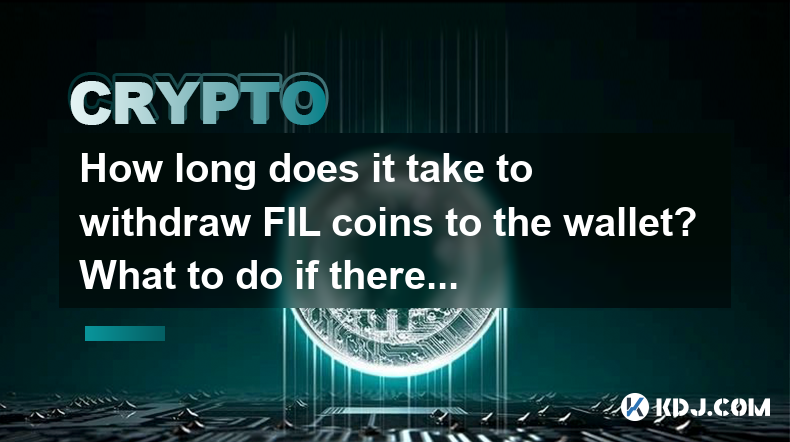-
 Bitcoin
Bitcoin $107,792.7836
-1.83% -
 Ethereum
Ethereum $2,490.3334
-3.99% -
 Tether USDt
Tether USDt $1.0003
0.00% -
 XRP
XRP $2.2177
-2.39% -
 BNB
BNB $652.5191
-1.50% -
 Solana
Solana $146.6253
-4.04% -
 USDC
USDC $1.0001
0.01% -
 TRON
TRON $0.2832
-1.14% -
 Dogecoin
Dogecoin $0.1623
-5.82% -
 Cardano
Cardano $0.5701
-5.05% -
 Hyperliquid
Hyperliquid $38.6009
-4.85% -
 Sui
Sui $2.8604
-5.95% -
 Bitcoin Cash
Bitcoin Cash $487.6897
-2.30% -
 Chainlink
Chainlink $13.0565
-5.05% -
 UNUS SED LEO
UNUS SED LEO $9.0735
0.43% -
 Avalanche
Avalanche $17.6635
-5.16% -
 Stellar
Stellar $0.2382
-2.81% -
 Toncoin
Toncoin $2.7498
-4.12% -
 Shiba Inu
Shiba Inu $0.0...01134
-4.91% -
 Litecoin
Litecoin $86.4080
-3.46% -
 Hedera
Hedera $0.1526
-4.69% -
 Monero
Monero $313.9315
-1.80% -
 Dai
Dai $1.0000
0.00% -
 Polkadot
Polkadot $3.3426
-5.85% -
 Ethena USDe
Ethena USDe $1.0001
-0.02% -
 Bitget Token
Bitget Token $4.4044
-3.80% -
 Uniswap
Uniswap $6.9000
-9.33% -
 Pepe
Pepe $0.0...09552
-5.65% -
 Aave
Aave $263.0698
-6.29% -
 Pi
Pi $0.4693
-4.76%
How long does it take to withdraw FIL coins to the wallet? What to do if there is a delay?
Withdrawing FIL coins involves initiating a request, platform verification, and blockchain confirmation, taking 15 minutes to several hours, influenced by network congestion and platform policies.
May 02, 2025 at 06:22 am

Withdrawing FIL coins to a wallet is a process that involves several steps and can be influenced by various factors. Understanding the timeline and potential delays is crucial for managing expectations and taking appropriate actions. This article will guide you through the process, expected timelines, and steps to take if you encounter delays in withdrawing FIL coins.
Understanding FIL Withdrawal Process
The process of withdrawing FIL coins to a wallet typically involves initiating a withdrawal request from an exchange or a platform where the FIL coins are held. Once the request is made, the platform processes it, and the coins are sent to the specified wallet address.
- Initiate Withdrawal: Log into the platform where your FIL coins are stored. Navigate to the withdrawal section, enter the amount of FIL you wish to withdraw, and specify the destination wallet address.
- Verification and Processing: The platform will verify the withdrawal request, which may involve confirming your identity and ensuring you have sufficient FIL balance. Once verified, the platform processes the transaction.
- Blockchain Confirmation: After the platform sends the FIL coins, the transaction must be confirmed on the Filecoin blockchain. This involves miners validating and adding the transaction to a block.
Expected Timeline for FIL Withdrawal
The time it takes to withdraw FIL coins can vary based on several factors, including the platform's processing time, network congestion, and the Filecoin blockchain's confirmation time.
- Platform Processing Time: This can range from a few minutes to several hours, depending on the platform's policies and the volume of withdrawal requests they are handling.
- Blockchain Confirmation Time: Filecoin uses a Proof-of-Replication (PoRep) and Proof-of-Spacetime (PoSt) consensus mechanism. The average block time on the Filecoin network is about 30 seconds, but it typically takes around 10 to 15 minutes for a transaction to receive the necessary confirmations to be considered secure.
Combining these factors, the total time to withdraw FIL coins to a wallet can range from 15 minutes to several hours. In some cases, especially during high network congestion, it may take longer.
Factors Affecting Withdrawal Time
Several factors can influence the time it takes to withdraw FIL coins:
- Network Congestion: If the Filecoin network is experiencing high transaction volumes, it can lead to delays in transaction processing and confirmation.
- Platform Policies: Different platforms may have different processing times and withdrawal limits, which can affect the overall timeline.
- Wallet Address Verification: If the destination wallet address is new or has not been used before, additional verification steps might be required, leading to delays.
What to Do if There is a Delay in FIL Withdrawal
If you experience a delay in withdrawing FIL coins, there are several steps you can take to address the issue:
- Check Transaction Status: First, check the status of your withdrawal request on the platform. Most platforms provide a transaction ID or a status update that you can use to track your withdrawal.
- Verify Blockchain Confirmation: Use a Filecoin blockchain explorer to check if your transaction has been broadcast to the network and is awaiting confirmation. You can enter the transaction ID to see its current status.
- Contact Platform Support: If the transaction appears to be stuck or if you cannot find any information about it, reach out to the platform's customer support. Provide them with the transaction ID and details of your withdrawal request.
- Monitor Your Wallet: Keep an eye on the wallet address to which you are withdrawing the FIL coins. Sometimes, the transaction may be confirmed, but the wallet might take some time to reflect the new balance.
Preventive Measures to Avoid Withdrawal Delays
Taking certain preventive measures can help minimize the risk of delays when withdrawing FIL coins:
- Use Trusted Platforms: Choose reputable and well-established platforms for holding and withdrawing your FIL coins. These platforms typically have more efficient processing times and better customer support.
- Verify Wallet Address: Double-check the wallet address before initiating the withdrawal. Incorrect addresses can lead to lost funds and delays in resolving the issue.
- Withdraw During Off-Peak Times: If possible, try to withdraw your FIL coins during times when the network is less congested, such as early mornings or late nights.
- Keep Sufficient Balance: Ensure you have enough FIL in your account to cover any transaction fees. Insufficient balance can lead to failed withdrawal attempts and subsequent delays.
Common Issues and Solutions
Some common issues that may cause delays in FIL withdrawals include:
- High Transaction Fees: If the network is congested, setting a higher transaction fee can help prioritize your transaction and speed up the confirmation process.
- Platform Maintenance: Occasionally, platforms may undergo maintenance or updates, which can temporarily halt withdrawal processing. Check the platform's announcements for any scheduled maintenance.
- Security Protocols: Some platforms may have additional security measures, such as withdrawal limits or mandatory waiting periods for new users, which can delay withdrawals.
To address these issues:
- Adjust Transaction Fees: If you are using a platform that allows you to set your own transaction fees, consider increasing them during times of high network congestion.
- Stay Informed: Regularly check the platform's official communication channels for any updates or scheduled maintenance that could affect withdrawals.
- Understand Platform Policies: Familiarize yourself with the platform's security protocols and withdrawal policies to better anticipate any potential delays.
Frequently Asked Questions
Q: Can I cancel a FIL withdrawal request if it is delayed?
A: Whether you can cancel a FIL withdrawal request depends on the platform's policies. Some platforms allow cancellation of pending withdrawals, while others do not. If cancellation is possible, it typically must be done before the transaction is processed and sent to the blockchain. Check with the platform's support team for specific guidance.
Q: What should I do if my FIL withdrawal shows as completed but the funds are not in my wallet?
A: If your FIL withdrawal shows as completed on the platform but the funds have not appeared in your wallet, first ensure you are checking the correct wallet address. If the address is correct, use a Filecoin blockchain explorer to verify the transaction's status. If the transaction is confirmed on the blockchain but not reflected in your wallet, contact the wallet provider's support for assistance.
Q: Are there any fees associated with FIL withdrawals?
A: Yes, there are typically fees associated with FIL withdrawals. These can include platform withdrawal fees and network transaction fees. The platform withdrawal fee is set by the exchange or platform, while the network transaction fee is paid to miners for processing and confirming the transaction on the Filecoin blockchain. Always check the fee structure of your platform before initiating a withdrawal.
Q: How can I speed up a delayed FIL withdrawal?
A: To speed up a delayed FIL withdrawal, you can try the following: increase the transaction fee if your platform allows it, withdraw during off-peak times to avoid network congestion, and ensure your wallet address is verified and correct. If the delay persists, contact the platform's support team for further assistance.
Disclaimer:info@kdj.com
The information provided is not trading advice. kdj.com does not assume any responsibility for any investments made based on the information provided in this article. Cryptocurrencies are highly volatile and it is highly recommended that you invest with caution after thorough research!
If you believe that the content used on this website infringes your copyright, please contact us immediately (info@kdj.com) and we will delete it promptly.
- Bitcoin's Pattern Break: Are HODLers the Key to the Next Surge?
- 2025-07-04 18:50:12
- Bitcoin Price, Trump's Bill, and the $150K Dream: A NYC Take
- 2025-07-04 19:50:12
- Ethereum, LILPEPE, and the July Bounce: Will Pepe Steal ETH's Thunder?
- 2025-07-04 19:10:12
- Binance Institutional Loans: Unlocking 4x Leverage and Zero Interest for Whales
- 2025-07-04 19:15:12
- Bitcoin Bull Run: Analysts Eye Peak in Late 2025?
- 2025-07-04 19:20:13
- Pepe Indicators, Bullish Forecast: Can the Meme Coin Rally?
- 2025-07-04 19:25:12
Related knowledge

How to customize USDT TRC20 mining fees? Flexible adjustment tutorial
Jun 13,2025 at 01:42am
Understanding USDT TRC20 Mining FeesMining fees on the TRON (TRC20) network are essential for processing transactions. Unlike Bitcoin or Ethereum, where miners directly validate transactions, TRON uses a delegated proof-of-stake (DPoS) mechanism. However, users still need to pay bandwidth and energy fees, which are collectively referred to as 'mining fe...

USDT TRC20 transaction is stuck? Solution summary
Jun 14,2025 at 11:15pm
Understanding USDT TRC20 TransactionsWhen users mention that a USDT TRC20 transaction is stuck, they typically refer to a situation where the transfer of Tether (USDT) on the TRON blockchain has not been confirmed for an extended period. This issue may arise due to various reasons such as network congestion, insufficient transaction fees, or wallet-rela...

How to cancel USDT TRC20 unconfirmed transactions? Operation guide
Jun 13,2025 at 11:01pm
Understanding USDT TRC20 Unconfirmed TransactionsWhen dealing with USDT TRC20 transactions, it’s crucial to understand what an unconfirmed transaction means. An unconfirmed transaction is one that has been broadcasted to the blockchain network but hasn’t yet been included in a block. This typically occurs due to low transaction fees or network congestio...

How to check USDT TRC20 balance? Introduction to multiple query methods
Jun 21,2025 at 02:42am
Understanding USDT TRC20 and Its ImportanceUSDT (Tether) is one of the most widely used stablecoins in the cryptocurrency market. It exists on multiple blockchain networks, including TRC20, which operates on the Tron (TRX) network. Checking your USDT TRC20 balance accurately is crucial for users who hold or transact with this asset. Whether you're sendi...

What to do if USDT TRC20 transfers are congested? Speed up trading skills
Jun 13,2025 at 09:56am
Understanding USDT TRC20 Transfer CongestionWhen transferring USDT TRC20, users may occasionally experience delays or congestion. This typically occurs due to network overload on the TRON blockchain, which hosts the TRC20 version of Tether. Unlike the ERC20 variant (which runs on Ethereum), TRC20 transactions are generally faster and cheaper, but during...

The relationship between USDT TRC20 and TRON chain: technical background analysis
Jun 12,2025 at 01:28pm
What is USDT TRC20?USDT TRC20 refers to the Tether (USDT) token issued on the TRON blockchain using the TRC-20 standard. Unlike the more commonly known ERC-20 version of USDT (which runs on Ethereum), the TRC-20 variant leverages the TRON network's infrastructure for faster and cheaper transactions. The emergence of this version came as part of Tether’s...

How to customize USDT TRC20 mining fees? Flexible adjustment tutorial
Jun 13,2025 at 01:42am
Understanding USDT TRC20 Mining FeesMining fees on the TRON (TRC20) network are essential for processing transactions. Unlike Bitcoin or Ethereum, where miners directly validate transactions, TRON uses a delegated proof-of-stake (DPoS) mechanism. However, users still need to pay bandwidth and energy fees, which are collectively referred to as 'mining fe...

USDT TRC20 transaction is stuck? Solution summary
Jun 14,2025 at 11:15pm
Understanding USDT TRC20 TransactionsWhen users mention that a USDT TRC20 transaction is stuck, they typically refer to a situation where the transfer of Tether (USDT) on the TRON blockchain has not been confirmed for an extended period. This issue may arise due to various reasons such as network congestion, insufficient transaction fees, or wallet-rela...

How to cancel USDT TRC20 unconfirmed transactions? Operation guide
Jun 13,2025 at 11:01pm
Understanding USDT TRC20 Unconfirmed TransactionsWhen dealing with USDT TRC20 transactions, it’s crucial to understand what an unconfirmed transaction means. An unconfirmed transaction is one that has been broadcasted to the blockchain network but hasn’t yet been included in a block. This typically occurs due to low transaction fees or network congestio...

How to check USDT TRC20 balance? Introduction to multiple query methods
Jun 21,2025 at 02:42am
Understanding USDT TRC20 and Its ImportanceUSDT (Tether) is one of the most widely used stablecoins in the cryptocurrency market. It exists on multiple blockchain networks, including TRC20, which operates on the Tron (TRX) network. Checking your USDT TRC20 balance accurately is crucial for users who hold or transact with this asset. Whether you're sendi...

What to do if USDT TRC20 transfers are congested? Speed up trading skills
Jun 13,2025 at 09:56am
Understanding USDT TRC20 Transfer CongestionWhen transferring USDT TRC20, users may occasionally experience delays or congestion. This typically occurs due to network overload on the TRON blockchain, which hosts the TRC20 version of Tether. Unlike the ERC20 variant (which runs on Ethereum), TRC20 transactions are generally faster and cheaper, but during...

The relationship between USDT TRC20 and TRON chain: technical background analysis
Jun 12,2025 at 01:28pm
What is USDT TRC20?USDT TRC20 refers to the Tether (USDT) token issued on the TRON blockchain using the TRC-20 standard. Unlike the more commonly known ERC-20 version of USDT (which runs on Ethereum), the TRC-20 variant leverages the TRON network's infrastructure for faster and cheaper transactions. The emergence of this version came as part of Tether’s...
See all articles

























































































